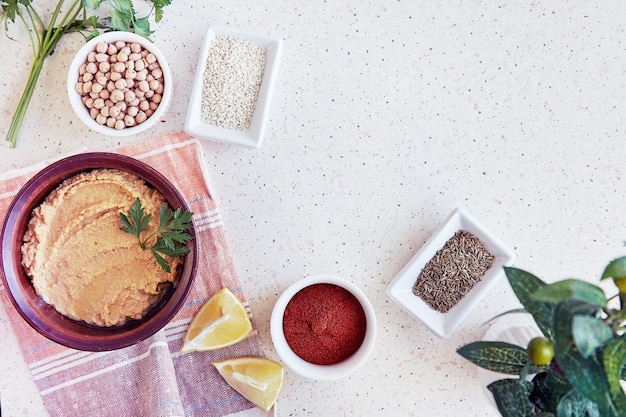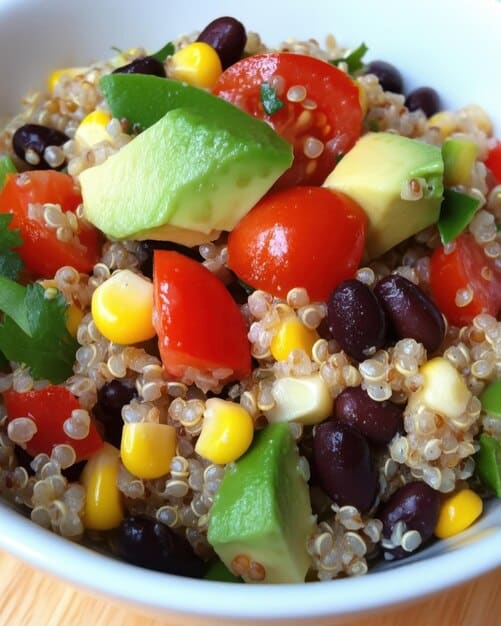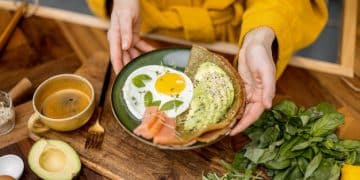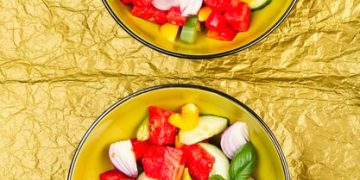Plant-Based Protein Recipes for Muscle Gain: The 2025 Guide

The Ultimate Guide to Plant-Based Protein Recipes for Muscle Gain in 2025 provides a comprehensive collection of delicious and effective recipes designed to help you build muscle using only plant-based ingredients, ensuring both your fitness goals and dietary preferences are met.
Are you looking to build muscle while sticking to a plant-based diet? It’s absolutely achievable! With the right recipes and nutritional knowledge, you can fuel your workouts and support muscle growth effectively. This Updated 2025: The Ultimate Guide to Plant-Based Protein Recipes for Muscle Gain will provide you with everything you need to succeed.
Understanding Plant-Based Protein for Muscle Building
Many people believe that protein is the sole domain of meat-eaters. However, a variety of plant-based foods offer complete protein sources that can effectively support muscle growth and repair. Understanding these sources is the first step towards creating a successful plant-based muscle-building plan.
Essential Amino Acids and Plant-Based Sources
Complete proteins contain all nine essential amino acids that our bodies can’t produce on their own. While animal products are often touted as the best sources, plants like quinoa, soy, and hemp seeds also offer complete protein profiles.
- Quinoa: A versatile grain that’s a complete protein, easily incorporated into salads, bowls, and side dishes.
- Soy: Includes tofu, tempeh, and edamame, all excellent sources of protein and other essential nutrients.
- Hemp Seeds: These seeds are not only a complete protein but also rich in omega-3 and omega-6 fatty acids.

Beyond these complete proteins, combining different plant-based foods can provide all essential amino acids. For instance, pairing legumes (like beans and lentils) with grains (like rice or oats) creates a complete protein source.
Calculating Your Protein Needs
The amount of protein you need depends on your activity level and fitness goals. For muscle gain, aim for 0.7 to 1 gram of protein per pound of body weight. This may seem like a lot, but it’s achievable with a well-planned plant-based diet.
In conclusion, building muscle on a plant-based diet requires an understanding of complete protein sources and careful planning to meet your daily protein needs. By incorporating a variety of protein-rich plant foods, you can effectively support your fitness goals.
Top Plant-Based Protein Recipes for 2025
Now that you understand the basics of plant-based protein, let’s dive into some delicious and effective recipes that will help you build muscle in 2025. These recipes are designed to be both nutritious and flavorful, making it easier to stick to your fitness goals.
High-Protein Breakfast Options
Starting your day with a protein-packed breakfast can set the tone for your entire day. Here are a few plant-based breakfast recipes to try:
- Tofu Scramble: A versatile breakfast option that can be customized with different vegetables and spices.
- Overnight Oats with Protein Powder: A convenient and quick breakfast that can be prepared the night before.
- Smoothie with Plant-Based Protein: A fast and easy way to get a protein boost in the morning.
Lunch and Dinner Recipes for Muscle Growth
These recipes focus on incorporating a variety of plant-based protein sources to support muscle growth throughout the day:
A balanced diet that includes a variety of nutrient-dense foods is crucial for overall health and muscle growth. Focus on whole grains, healthy fats, and plenty of fruits and vegetables.

- Lentil Soup: A hearty and filling soup that’s packed with protein and fiber.
- Black Bean Burgers: A flavorful and satisfying alternative to traditional beef burgers.
- Tempeh Stir-Fry: A quick and easy meal that can be customized with different vegetables and sauces.
In summary, these plant-based recipes offer a variety of options for maximizing your protein intake throughout the day, supporting muscle growth and overall health.
Optimizing Your Plant-Based Diet for Muscle Gain
While recipes are essential, optimizing your overall diet is just as important. Here are some tips to ensure you’re getting the most out of your plant-based diet for muscle gain.
Timing Your Protein Intake
Consuming protein throughout the day is crucial for muscle growth and repair. Aim to have a protein-rich meal or snack every 3-4 hours.
Consuming protein both before and after workouts can enhance muscle recovery and growth. A small protein-packed snack or meal can make a big difference.
Combining Plant-Based Protein Sources
As mentioned earlier, combining different plant-based foods can create complete protein sources. Here are a few examples:
- Beans and Rice: A classic combination that provides all essential amino acids.
- Peanut Butter on Whole Wheat Bread: A simple and satisfying snack that combines protein and carbohydrates.
- Hummus and Pita Bread: A Mediterranean-inspired snack that’s both delicious and nutritious.
In conclusion, timing your protein intake and combining different plant-based sources are key strategies for optimizing your diet for muscle gain.
Supplements to Support Plant-Based Muscle Growth
While a well-planned diet can provide all the nutrients you need, certain supplements can help support muscle growth and overall health on a plant-based diet.
Creatine
Creatine is a popular supplement among athletes and bodybuilders. It can help increase strength and muscle mass. While creatine is naturally found in animal products, it’s also available in supplement form.
Taking creatine can improve your performance during high-intensity workouts, leading to greater muscle growth over time.
Plant-Based Protein Powders
Protein powders can be a convenient way to boost your protein intake, especially if you’re struggling to meet your daily needs through food alone. There are several plant-based protein powders available, including soy, pea, and rice protein.
- Soy Protein: A complete protein source that’s easily digestible and widely available.
- Pea Protein: A good source of protein and amino acids, especially leucine, which is important for muscle growth.
- Rice Protein: A gluten-free option that’s easily digestible and hypoallergenic.
Ultimately, these supplements can be valuable additions to your plant-based muscle-building plan, but they should be used in conjunction with a well-planned diet and exercise program.
Sample Plant-Based Meal Plan for Muscle Gain
To help you put everything together, here’s a sample meal plan that incorporates the recipes and tips discussed in this guide. Adjust the portions and calories to meet your individual needs.
Day 1: High-Protein Plant-Based Meal Plan
This sample meal plan is designed to provide you with a balance of protein, carbohydrates, and healthy fats throughout the day.
Starting your day with a tofu scramble provides a protein boost that can help you feel full and energized. Black Bean Burgers offers a hearty and satisfying meal.
- Breakfast: Tofu Scramble with Whole Wheat Toast (30g protein)
- Lunch: Lentil Soup (20g protein)
- Dinner: Black Bean Burgers on Whole Wheat Buns (35g protein)
Day 2: Variety and Nutrient Density
Ensuring variety in your meal plan is important for meeting your nutritional needs and keeping your meals interesting.
A smoothie with plant-based protein offers a quick and easy way to get a protein boost. Tempeh Stir-Fry allows you to customize your meal with different vegetables and sauces.
- Breakfast: Smoothie with Plant-Based Protein (25g protein)
- Lunch: Quinoa Salad with Chickpeas and Vegetables (22g protein)
- Dinner: Tempeh Stir-Fry with Brown Rice (33g protein)
In conclusion, these sample meal plans provide a framework for creating your own plant-based muscle-building diet. Remember to adjust the portions and calories to meet your individual needs and fitness goals.
Tracking Your Progress and Staying Motivated
Consistency is key when it comes to building muscle on any diet. Tracking your progress and staying motivated can help you stay on track and achieve your goals.
Setting Realistic Goals
Start with small, achievable goals. This will help you stay motivated and prevent you from feeling overwhelmed.
Setting specific, measurable, achievable, relevant, and time-bound (SMART) goals can provide clear direction and motivation.
Monitoring Your Progress
Track your workouts, meals, and body measurements to monitor your progress. This will help you see how far you’ve come and identify areas where you can improve.
Keep a food journal to track your calorie and macronutrient intake. Use a fitness tracker to monitor your activity levels and workout progress.
- Keep a Food Journal: Track your calorie and macronutrient intake to ensure you’re meeting your protein needs.
- Use a Fitness Tracker: Monitor your activity levels and workout progress.
- Take Regular Measurements: Track your weight, body fat percentage, and muscle mass to see how your body is changing.
In summary, setting realistic goals and monitoring your progress are essential for staying motivated and achieving your plant-based muscle-building goals.
| Key Point | Brief Description |
|---|---|
| 🌱 Protein Sources | Focus on quinoa, soy, hemp, and combined legumes/grains for complete proteins. |
| 💪 Protein Intake | Aim for 0.7-1g of protein per pound of body weight, spread throughout the day. |
| 🍳 Recipe Variety | Incorporate tofu scrambles, lentil soups, and black bean burgers for diverse options. |
| 📈 Progress Tracking | Monitor workouts, meals, and measurements for motivation and improvement. |
Frequently Asked Questions
▼
Yes, it’s absolutely possible! With proper planning and the right recipes, plant-based diets can provide all the necessary protein and nutrients for muscle growth. Focus on complete protein sources and adequate calorie intake.
▼
Excellent sources include quinoa, soy (tofu, tempeh, edamame), hemp seeds, chia seeds, lentils, beans, and chickpeas. Combining legumes with grains ensures you get all essential amino acids necessary for muscle repair and growth.
▼
Aim for 0.7 to 1 gram of protein per pound of body weight, especially when focusing on muscle gain. Distribute your protein intake throughout the day for optimal muscle synthesis and recovery.
▼
While not strictly necessary, supplements like creatine and plant-based protein powders can be beneficial. Creatine enhances strength and muscle mass, while protein powders offer a convenient boost if you struggle to meet daily needs.
▼
Easy options include tofu scrambles, lentil soup, black bean burgers, tempeh stir-fries, and quinoa salads. These recipes are quick to prepare, packed with protein, and can be customized to fit your dietary preferences.
Conclusion
Incorporating these plant-based protein recipes for muscle gain into your diet is a powerful step towards achieving your fitness goals in 2025. With dedication, the right knowledge, and delicious recipes, you can build muscle and maintain a healthy, plant-based lifestyle. Remember to personalize your approach, listen to your body, and enjoy the journey towards a stronger, healthier you!





